Issue 3 2019
Table of Contents
- From the Director
- PhD shows value of coloured rice for combating obesity health risks
- Cracking the problem of how to grade for rice quality at the delivery point
- Raise a toast to Baijiu
- Valuable experience at IRRI
- FGC Honours research
- Internship provides new perspective on PhD research
- Congratulations
- Presenting our research
From the Director
There’s been lots of excitement in the Functional Grains Centre in the last few months as we move towards the final stages of our Centre. Our team has continued to engage with industry and scientists in Australia and around the world. Based on PhD student Nancy’ Saji’s social media posts she had an amazing experience learning about rice production in the Philippines. We were also delighted to hear the news that PhD student Rachael Wood is this year’s recipient of the Farrer Memorial Trust Travelling Scholarship.
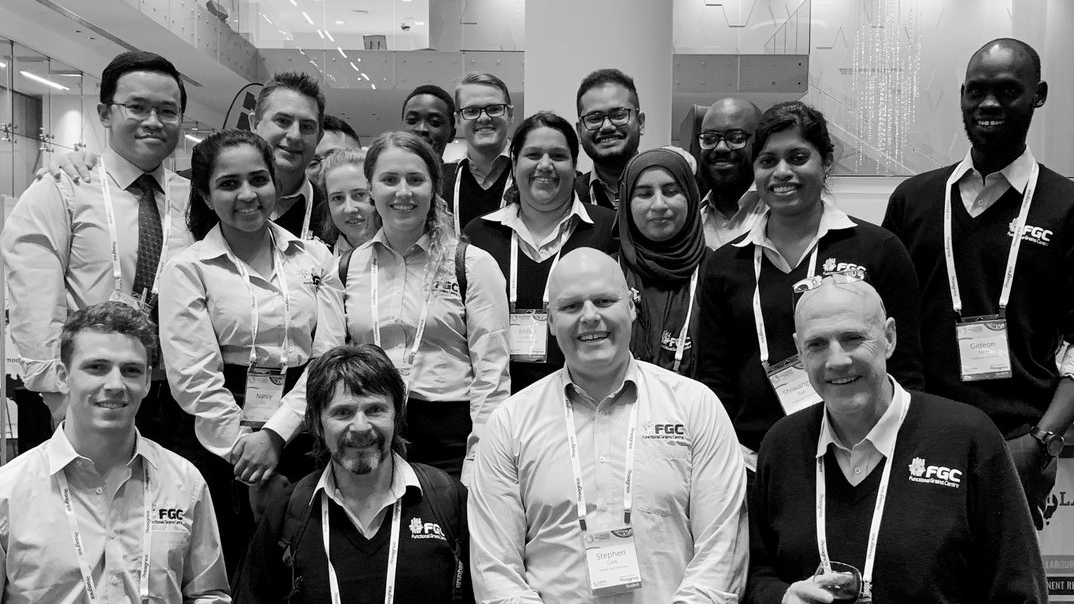 The FGC team have embarked on other adventures in recent months with their attendance at both the Summer Grains Conference and the Australasian Grain Science Association (AGSA) conference, you can read more later in the newsletter. The Summer Grains conference provided an opportunity for the team to learn more about the production side of the industry. Congratulations to PhD Rachael Wood and Honours student Borkwei Ed Nignpense on their winning posters. While in Queensland we also took the opportunity to engage our friends from Team Building Australia to run some activities. It was great to see how our team members performed under pressure to solve complex problems. FGC team members also had the opportunity to develop their media skills through our new initiative “FGC TV” which we introduced at this year’s AGSA conference. FGC team members were tasked with interviewing presenters and posting these videos on social media. Clearly, we have some budding journalists in the FGC.
The FGC team have embarked on other adventures in recent months with their attendance at both the Summer Grains Conference and the Australasian Grain Science Association (AGSA) conference, you can read more later in the newsletter. The Summer Grains conference provided an opportunity for the team to learn more about the production side of the industry. Congratulations to PhD Rachael Wood and Honours student Borkwei Ed Nignpense on their winning posters. While in Queensland we also took the opportunity to engage our friends from Team Building Australia to run some activities. It was great to see how our team members performed under pressure to solve complex problems. FGC team members also had the opportunity to develop their media skills through our new initiative “FGC TV” which we introduced at this year’s AGSA conference. FGC team members were tasked with interviewing presenters and posting these videos on social media. Clearly, we have some budding journalists in the FGC.
The FGC continues to welcome visiting scientists. We recently had the pleasure of having PhD student Alba Lucia visit from Mexico to work on antioxidant properties of proteins. We currently have Simon Xu visiting from Shenyang Agricultural University in China for 12 months. Simon will be working on the characterisation of sorghum starch and proteins. We will soon also welcome PhD student Marina Manini who will be visiting from Argentina to study the phenolic composition of ancient grains.
In recent weeks we have welcomed two new PhD students, Allister Clarke and Aduba Jok, and Honours student Raiyan Mahbub. As you will read later in the newsletter, Allister’s scholarship is funded by the Food Agility CRC and he will be working on ways to predict rice quality using machine learning. Aduba has received a Charles Sturt University PhD Scholarship and will work on anti-cancer properties of sorghum extracts, while Raiyan’s research on the anti-inflammatory properties of coloured rice extracts is supported by a scholarship from the Graham Centre for Agricultural Innovation.
It has been exciting to see a number of our PhD students submit their theses recently. Esther Callcott, Rachael Wood and Shiwangni Rao have all submitted their thesis for examination. We have also had examiner responses back for Chris Florides and Neeta Karve who have both received pass recommendations subject to some reviews. Hopefully there will be a good representation of FGC graduates at graduation ceremonies in December.
Professor Chris Blanchard
photo caption: The FGC team at the Australian Summer Grains Conference
PhD shows value of coloured rice for combating obesity health risks
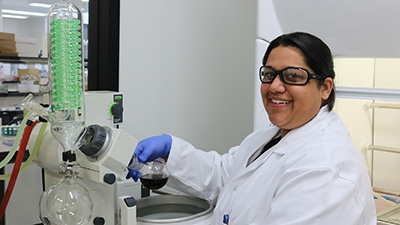 Research by Charles Sturt University PhD candidate Ms Esther Callcott has identified the potential for using Australian-grown coloured rice as a functional food to combat some of the health risk factors associated with obesity and lifestyle diseases.
Research by Charles Sturt University PhD candidate Ms Esther Callcott has identified the potential for using Australian-grown coloured rice as a functional food to combat some of the health risk factors associated with obesity and lifestyle diseases.
Ms Callcott’s research through the Functional Grains Centre has shown antioxidants found in pigmented rice may play a key role in targeting specific therapeutic pathways in obesity-related oxidative stress and inflammation.
Her research profiled the polyphenol content and antioxidant activity in Australian grown rice varieties. She also tested the anti-inflammatory and antioxidant properties in cell cultures and in clinical trials involving healthy weight and obese people.
Key findings
- Australian-grown coloured rice is rich in bioactive compounds called polyphenols
- Red and purple/black varieties are most abundant in polyphenol content
- Polyphenols from Australian-grown coloured rice has high antioxidant potential.
- Polyphenols from Australian-grown coloured rice increases antioxidant activity in cell-culture based obesity studies
- Polyphenols from Australian-grown coloured rice reduces inflammation and free-radical damage in biological cell-culture based models of obesity.
- When consumed, one cup of red or purple/black rice increased antioxidant activity in healthy and obese populations
- When consumed, one cup of red or purple/black rice decreased inflammation and free-radical damage biomarkers in healthy and obese populations
Why is this research important?
This research has the potential to benefit human health and to develop new opportunities for the Australian rice industry.
“Obesity is significantly correlated to the development of other lifestyle diseases such as type II diabetes, cardiovascular disease and cancer due to the obese having higher levels of inflammation and free radical damage,” said Ms Callcott.
“The findings from this study are important for consumers as this research demonstrates that consuming only one cup of purple/black or red rice will increase their antioxidant activity and reduce inflammation and free radical damage.
“As a result, incorporating the consumption of coloured rice into their diets may have the potential to reduce consumer’s risk of developing lifestyle diseases. Overall, improving the health of the Australian consumer and reducing strain on the public health system.
“Increasing consumer demand for coloured rice may pave the way for greater commercial production, and value adding in the Australian rice industry with the potential to boost economic returns.
“Most of the coloured cultivars prefer warmer climates, so this research may facilitate the Australian rice industry’s expansion into northern Australia, providing new farming system opportunities in those regions.”
What further knowledge is needed?
Ms Callcott said more research is needed to understand the long-term health benefits of consuming coloured rice.
“In particular, long-term human clinical trials need to be conducted to investigate the impact coloured rice may have on weight loss, antioxidant and anti-inflammatory activity and gut health as well as the effect on the pathogenesis of other lifestyle diseases,” Ms Callcott said.
Ms Callcott has submitted her thesis.
Cracking the problem of how to grade for rice quality at the delivery point
Developing a model to allow for rice to be graded on the basis of quality at the point of delivery is the focus of new PhD candidate Mr Allister Clarke.
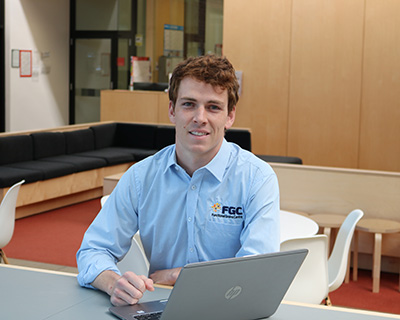 Mr Clarke’s research through the Functional Grains Centre (FGC) and the Food Agility Cooperative Research Centre (CRC), aims to boost returns to the rice industry by allowing for better storage and milling as a result of grain segregation.
Mr Clarke’s research through the Functional Grains Centre (FGC) and the Food Agility Cooperative Research Centre (CRC), aims to boost returns to the rice industry by allowing for better storage and milling as a result of grain segregation.
“Australian rice growers are paid based on the milling quality of their deliveries, in particular the whole grain yield (WGY) which represents the percentage of grains that break during milling.
“But it takes approximately five months for growers to find out how their deliveries have been graded, creating a delay in grower delivery payments and inhibiting quality based segregation through storage.
“This project aims to generate a prediction model that would allow for the grading of a load, based on rice quality, at the delivery point.”
Making use of data science
To develop the predictive model Mr Clarke will apply data mining techniques and machine learning algorithms onto historical production datasets.
“This will include data on farm management, environmental conditions, grower deliveries and grain quality appraisals,” Mr Clarke said.
“The ability to classify a delivery prior to milling gives the industry the ability to segregate loads based on quality and then plan their milling operation around this.
“The large difference in price between whole and broken grains means even just a couple of percent decrease in broken grains, through better management of storage and milling, would bring large amounts of revenue back to the industry,” Mr Clarke said.
Mr Clarke says the benefits to the grower will also come from using the knowledge extracted from the model to drive an increase in production of premium Australian rice sold into high-value markets.
“Having a better understanding of the factors that affect WGY would better inform decisions on farm, allowing for improved management for rice quality and profit,” Mr Clarke said.
“I hope this research will provide an opportunity for the industry to offer better prices back to the grower will improve the competitiveness of the crop and the success of the industry in the Riverina.”
PhD combines interests in rice and machine learning
Mr Clarke is no stranger to the rice industry after growing up on a farm near Finley in the heart of the Murray rice production area.
He studied a Bachelor of Science in Agriculture (Honours) at the University of Sydney.
“During my undergraduate studies I specialised in Ag Economics and then in my Honours year I began working with machine learning models and data mining for rice quality.
“This project really gave me an introduction into predictive modelling and rice quality as well as the idea of looking into it further through a PhD.
“While studying up in Sydney, I was also fortunate enough to attend two study trips to South East Asia. Once in Vietnam and the other in Laos.
“These tours allowed me to gain a greater appreciation of the importance of rice in these communities and for myself an insight into the role of research and development for these producers and their families.
As a recipient of the Ricegrowers’ Association of Australia ‘Greg Graham Memorial Scholarship’ Mr Clarke gained a greater understanding of rice quality and the importance of premium Australian rice production to the SunRice business.
Mr Clarke is supervised by Associate Professor Dan Waters, Professor Chris Blanchard and Associate Professor Zahid Islam from Charles Sturt and Russell Ford from SunRice.
Raise a toast to Baijiu
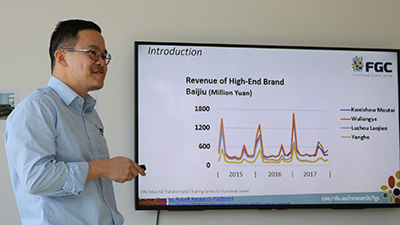 Functional Grains Centre scientists have poured a glass or two of the Chinese alcoholic drink baijiu to highlight their research to grow Australian sorghum markets.
Functional Grains Centre scientists have poured a glass or two of the Chinese alcoholic drink baijiu to highlight their research to grow Australian sorghum markets.
 The free tasting event was held to mark World Baijiu Day at Charles Sturt in Wagga Wagga on Friday 9 August.
The free tasting event was held to mark World Baijiu Day at Charles Sturt in Wagga Wagga on Friday 9 August.
 FGC post doctoral researcher Dr Siong Tan said baijiu is popular in China, representing a third of global spirit sales.
FGC post doctoral researcher Dr Siong Tan said baijiu is popular in China, representing a third of global spirit sales.
“Baijiu is a clear spirit usually distilled from fermented sorghum that’s between 40 to 60 per cent alcohol,” said Dr Tan.
“Research at the Functional Grains Centre is examining the quality requirements of sorghum used for baijiu production in China.
“Australian sorghum is an important summer crop in Queensland and northern NSW, but most of the grain is used as stock feed.
"We believe there are opportunities to add real export value to the sorghum for Australian producers by understanding the science behind Chinese baijiu production.”
The event was attended by more than 30 people who were guided through the tasting by Charles Sturt researcher Professor Anthony Saliba.
Dr Tan explained the project and talked about the significance of World Baijiu Day.
The Grains Research and Development Corporation has invested in the five-year research project titled ‘Expanding options for sorghum – food and distilling’, which is value adding for the grain.
You can learn more about our research in the video below.
Valuable experience at IRRI
Charles Sturt University (Charles Sturt) PhD candidate Nancy Saji was awarded a scholarship by the NSW Crawford Fund to attend the rice research to production course at the International Rice Research Institute (IRRI) in the Philippines.
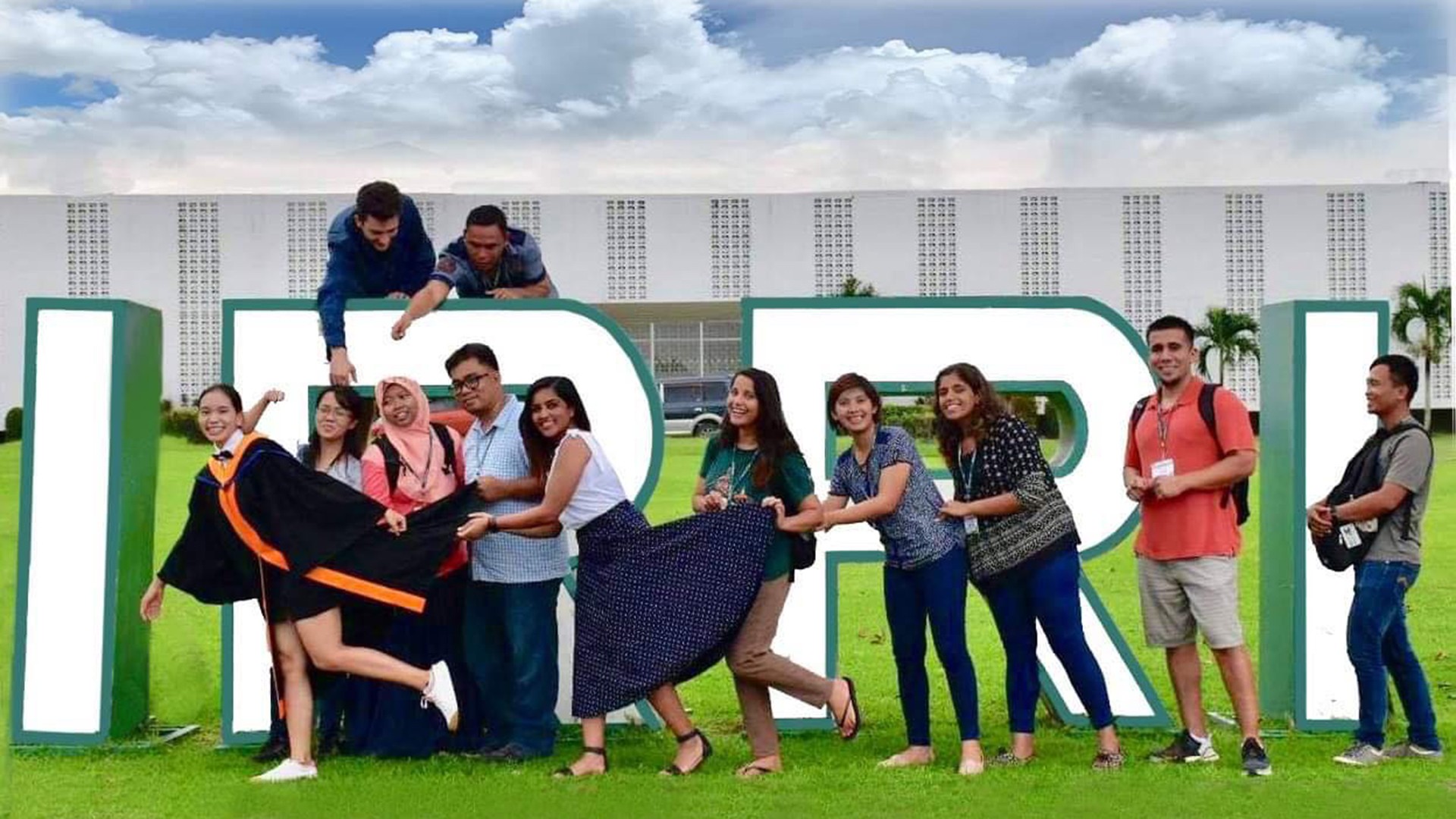 “The program aims to teach the participants the fundamentals of rice production, develop hands-on skills relating to rice production and breeding, provide new knowledge about the diversity of rice varieties, and raise awareness of food security,” Ms Saji said.
“The program aims to teach the participants the fundamentals of rice production, develop hands-on skills relating to rice production and breeding, provide new knowledge about the diversity of rice varieties, and raise awareness of food security,” Ms Saji said.
“We took part in a combination of classroom lectures, group discussions and field sessions. It was a great opportunity to network, hear about agricultural updates and developments from an international perspective and potentially form international collaborations.”
Ms Saji said a highlight was hearing about innovative technologies designed to help local farmers.
“The ‘Rice doctor’ is a diagnostic tool, designed to help farmers identify problems in their crop and offer actionable guidance on how to overcome these issues,” she said.
 “Another way technology is being used is through the interactive game, ‘Game of rice’ where rice production net profit can be potentially increased. The program simulates the probable conditions, problems and risks encountered by local farmers and by carefully selecting for appropriate solutions during these adversities, the game teaches the user to earn a higher net profit.
“Another way technology is being used is through the interactive game, ‘Game of rice’ where rice production net profit can be potentially increased. The program simulates the probable conditions, problems and risks encountered by local farmers and by carefully selecting for appropriate solutions during these adversities, the game teaches the user to earn a higher net profit.
“It was also great to get a better understanding of the current agricultural problems faced by the Filipino farmers, including high production cost, low income and under-utilisation of rice by-products.
“During one of the group activities, my group members and I decided to provide potential solutions to these problems and we created a research proposal video aiming to address these issues.”
“I tried to use my own expertise gained from my PhD project which also aims to utilise rice by-products. Now, one of my group member who works at the department of agriculture wants to make this a reality and he has presented this video as a starting point to his seniors. So I am very excited for a potential collaboration with him in the near future.”
FGC Honours research
The Functional Grains Centre is pleased to support the work of Charles Sturt University (Charles Sturt) Honours research students.
Let’s meet some of them.
Haben Melke
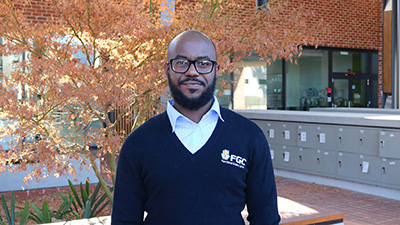 Charles Sturt Bachelor of Science (Honours) student Mr Haben Melke is investigating the anti-cancer properties of protein hydrolysate from lupin via their impact on cancer causing pathways.
Charles Sturt Bachelor of Science (Honours) student Mr Haben Melke is investigating the anti-cancer properties of protein hydrolysate from lupin via their impact on cancer causing pathways.
He completed undergraduate studies in medical science in the University of Tasmania and Charles Sturt University.
Mr Melke worked as a medical scientist in Dorevitch Pathology prior to joining the Functional Grains Centre. His Honours research is supported by a Graham Centre scholarship.
Gideon Kang
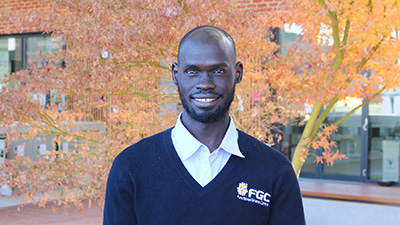 Bachelor of Science (Honours) student Mr Gideon Kang is investigating the effect of coloured-rice polyphenols on the gene expression associated with Beta-cell dysfunction in Type 2 Diabetes mellitus (T2DM).
Bachelor of Science (Honours) student Mr Gideon Kang is investigating the effect of coloured-rice polyphenols on the gene expression associated with Beta-cell dysfunction in Type 2 Diabetes mellitus (T2DM).
Previous research has confirmed the blood glucose lowering effects of polyphenols on T2DM. But it’s not clear if coloured rice varieties can modulate the genetic expression in dysfunctional beta cells.
“This research is very exciting as it has the potential to help T2DM management using coloured rice as a dietary intervention,” Mr Kang said.
Mr Kang attained a Graduate Certificate in Medical Science (Pathology) at Charles Sturt in 2018, and he has worked as a Medical Scientist at Dorevitch Pathology in 2015 and as a technical officer at Latrobe University 2019.
His Honours research is supported by a Graham Centre scholarship.
Internship provides new perspective on PhD research
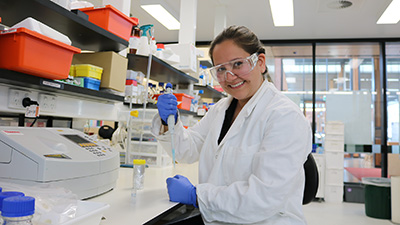 The opportunity to tap into the expertise of scientists working at the Functional Grains Centre has seen PhD student, Alba Lucia Peñaranda López from the National Technological Institute of Mexico spend two months in Wagga Wagga.
The opportunity to tap into the expertise of scientists working at the Functional Grains Centre has seen PhD student, Alba Lucia Peñaranda López from the National Technological Institute of Mexico spend two months in Wagga Wagga.
The visit is part of the Australia-Americas PhD Research Internship Program 2019 delivered by the Australian Academy of Science.
Ms Peñaranda López said her research is focused on the development of a fractionation process for egg yolk protein hydrolysates, and it was Charles Sturt University’s previous research in the area that drew her to the FGC.
“I found the visit has been beneficial for my research as it has given me a greater understanding of the techniques and I’ll be able to implement this when I go home,” she said.
“I’ve also enjoyed meeting and working with the people here in Australia, who have been very welcoming".
Congratulations
Charles Sturt University Excellence Award
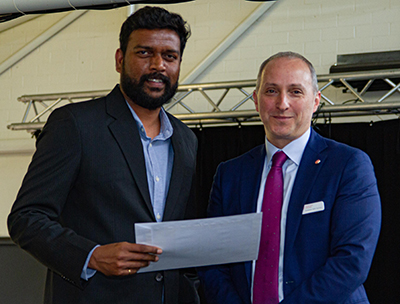 Dr Abishek Santhakumar from the Functional Grains Centre has been recognised with a Charles Sturt University Excellence Award for his work to understand the beneficial health properties of food.
Dr Abishek Santhakumar from the Functional Grains Centre has been recognised with a Charles Sturt University Excellence Award for his work to understand the beneficial health properties of food.
Dr Santhakumar uses rigorous scientific approaches to demonstrate positive human health impacts and provide insights into the physiological mechanisms of these impacts.
Three-minute thesis success
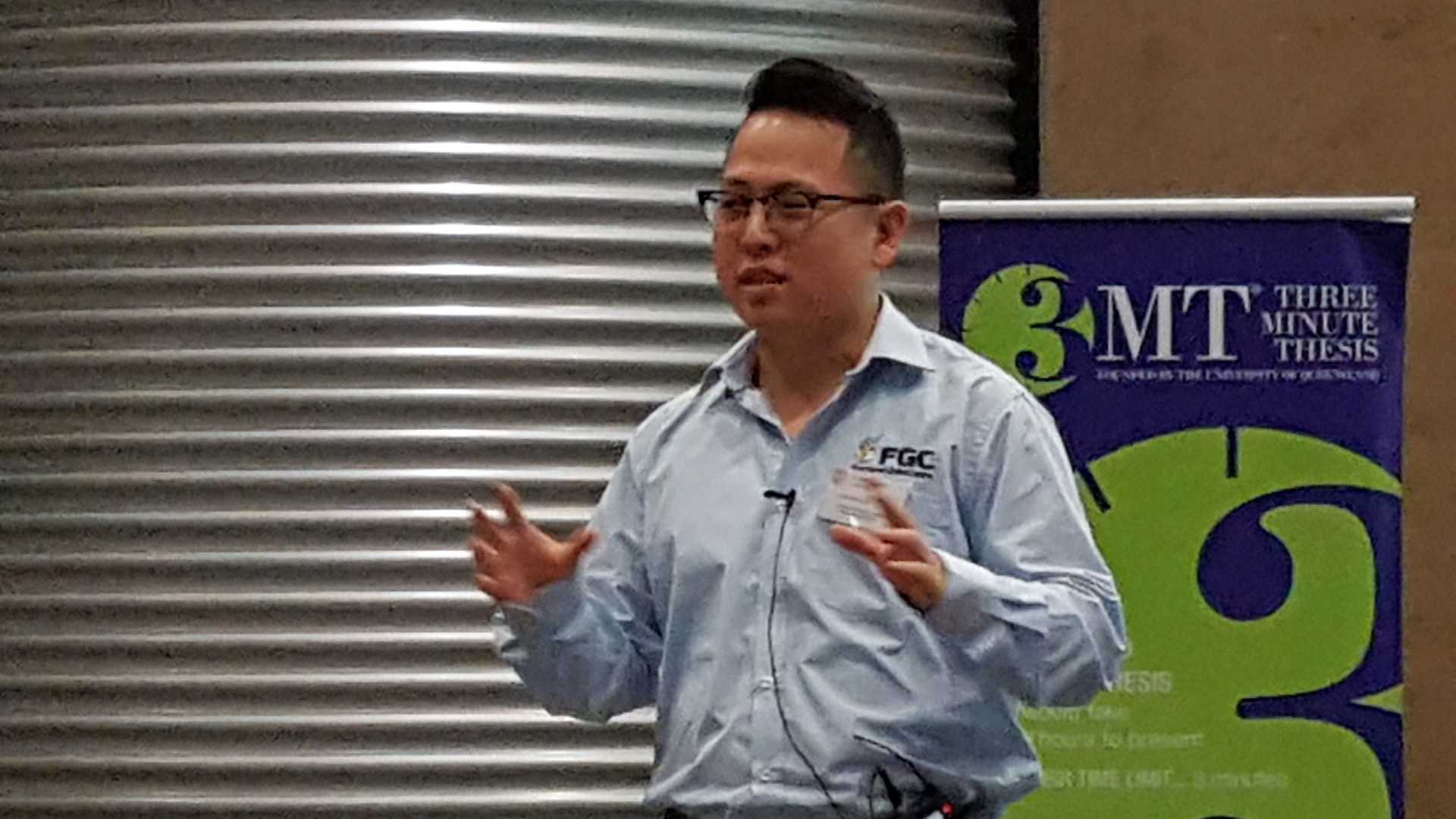 PhD research takes years of dedication with countless hours in the laboratory, out in the field or poring over data, but three minutes was all the time on the clock for FGC PhD student James Lee to share his research.
PhD research takes years of dedication with countless hours in the laboratory, out in the field or poring over data, but three minutes was all the time on the clock for FGC PhD student James Lee to share his research.
Mr Lee took part in the final of the Charles Sturt University (Charles Sturt) Three Minute Thesis (3MT) competition in June. Read more in this news story.
James missed out on the prizes but did a great job presenting his research - congratulations to the winner Blake Collins.
Presenting our research
Australasian Grain Science Association Conference
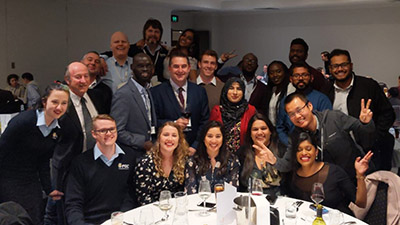 The team from the Functional Grains Centre (FGC) attended the 2019 Australasian Grain Science Association Conference in Melbourne in August.
The team from the Functional Grains Centre (FGC) attended the 2019 Australasian Grain Science Association Conference in Melbourne in August.
12 FGC members presented posters while 8 made oral presentations (Michelle Toutounji, Rachael Wood, Drew Portman, Stephen Cork, Esther Callcott, Siong Tan, Shiwangni Rao, Chris Florides)
PhD student Stephen Cork said, “It was great to connect with many of the people from previous AGSA meetings and the wider Functional Grains Centre family spread out through the grain science community.
"Our team contributed some excellent talks, posters and supported the AGSA meeting by being the welcoming face at the registration table and providing comprehensive social media coverage including FGCTV interviews of the speakers."
Australian Summer Grains Conference
The Functional Grains Centre also had a strong presence at the Australian Summer Grains Conference on the Gold Coast in July.
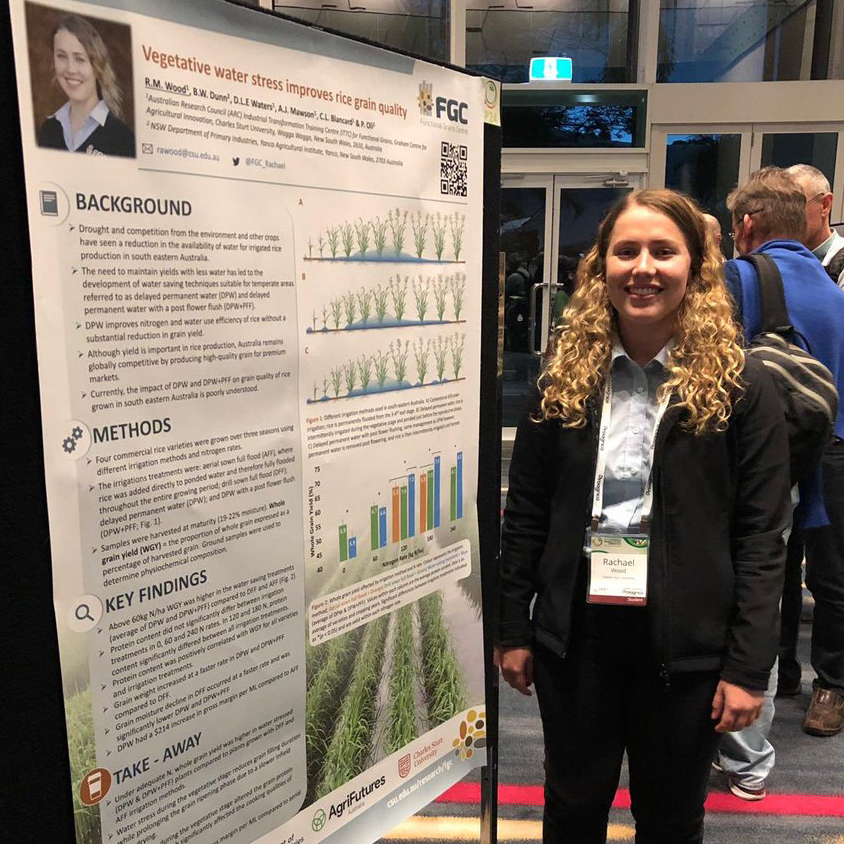 Postdoctoral researchers Dr Siong Tan and Dr Ali Khoddami made oral presentations on Sorghum and FGC Honours and PhD students made up 20 out of the 41 poster presentations at the Conference.
Postdoctoral researchers Dr Siong Tan and Dr Ali Khoddami made oral presentations on Sorghum and FGC Honours and PhD students made up 20 out of the 41 poster presentations at the Conference.
They presented findings from a diverse range of projects from chickpeas and sorghum, to rice, lupins and lentils, showcasing research to improve human health, grain production and processing.
PhD student James Lee enjoyed gaining a greater understanding of the field application of research and meeting grassroots industry representatives including growers, suppliers and agronomists.
"The Conference showed the importance of being able to identify, translate and present research in a respectful manner to those who are most likely to benefit either directly or indirectly from the research being performed," said Mr Lee.
PhD student Stephen Cork said, “The Conference provided an excellent opportunity to survey the breadth of the summer grains industry in Australia, from sorghum, to sesame, mung beans and corn.Key issues raised included gaining return on crop investments, precision agriculture and suggestions to improve industry governance.”
Congratulations to PhD student Rachael Wood and Honours research student Borkwei Ed Nignpense who picked up poster prizes.
FGC research presented at Charles Sturt Honours symposium.
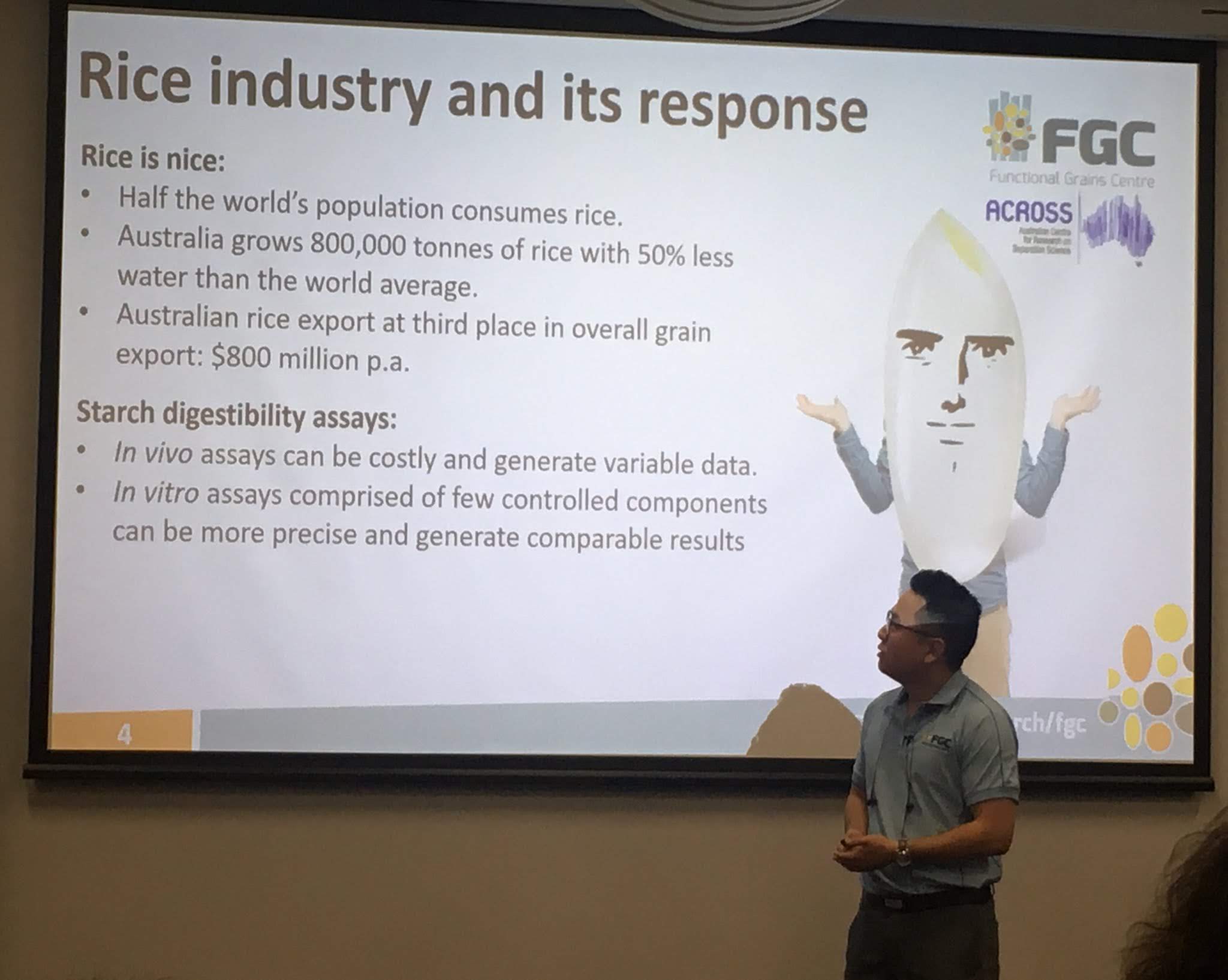 Functional Grains Centre students were amongst those presenting their research at the annual Charles Sturt Higher Degree Research (HDR) and Honours Symposium in Wagga Wagga in July.
Functional Grains Centre students were amongst those presenting their research at the annual Charles Sturt Higher Degree Research (HDR) and Honours Symposium in Wagga Wagga in July.
FGC PhD student James Lee said, “This symposium gives HDR students valuable experience presenting their research and generates equally valuable discussion about the research and feedback about the way students have presented it.
“It is lovely to see that most of the research is focused on contributing to the overall well-being of rural and regional NSW; with most topics covering topics such as agriculture and physical and mental health.
“Overall, this was a good opportunity for me in getting solid practice in presenting my research in a way that could be easily understood by people that may not have the same background as I do.
“There’s also the added benefit as a distance student, as I am based in Sydney, to come by Wagga Wagga to catch up, ask questions and keep in touch with everyone and the University in general – plus I like being out of the city,” Mr Lee said.
Showcasing research paddock to plate
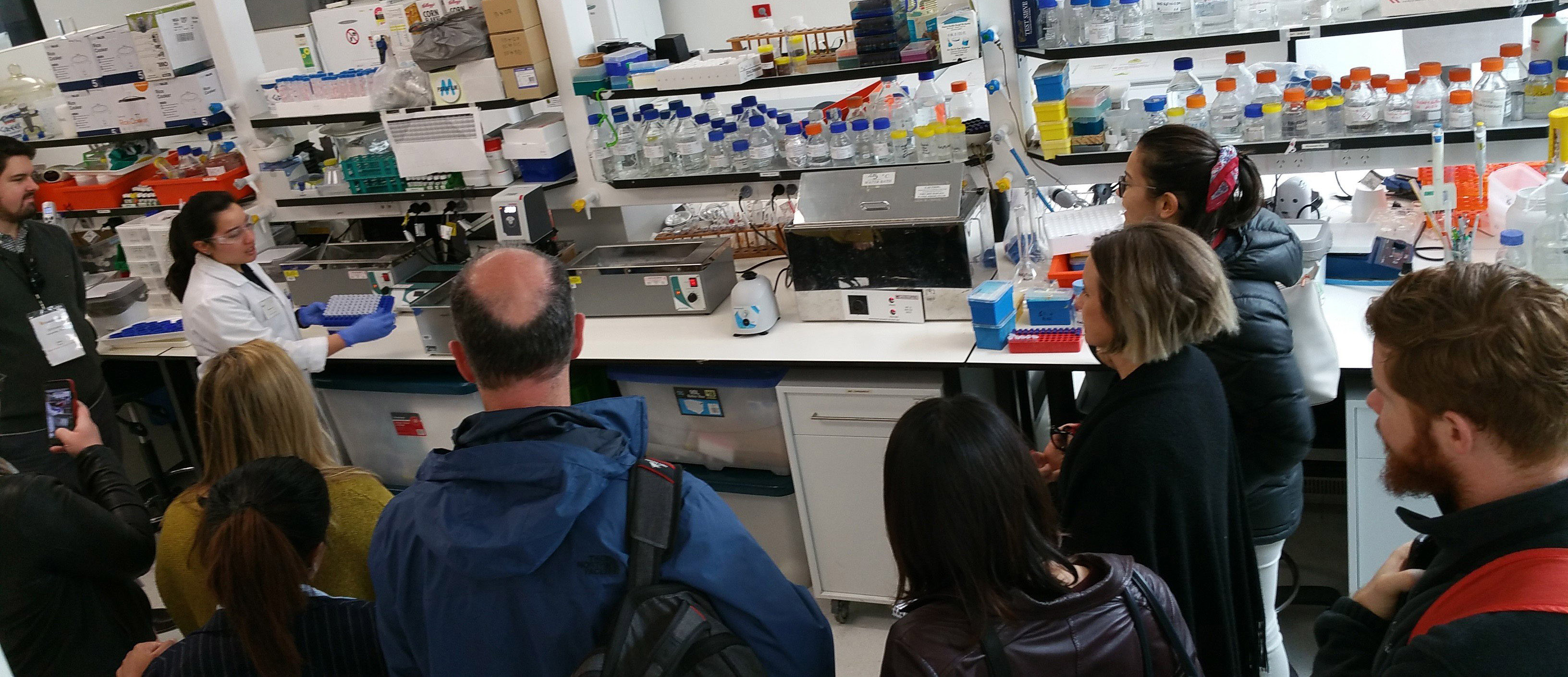 The Functional Grains Centre has also shared our research with delegates on Grain Growers Limited 2019 Grains Innovation Tour. The tour gives 30 Australian government public servants insight into the grain supply chain.
The Functional Grains Centre has also shared our research with delegates on Grain Growers Limited 2019 Grains Innovation Tour. The tour gives 30 Australian government public servants insight into the grain supply chain.
FGC scientists and students working with rice presented their work at the AgriFutures Australia rice meeting in Yanco.


